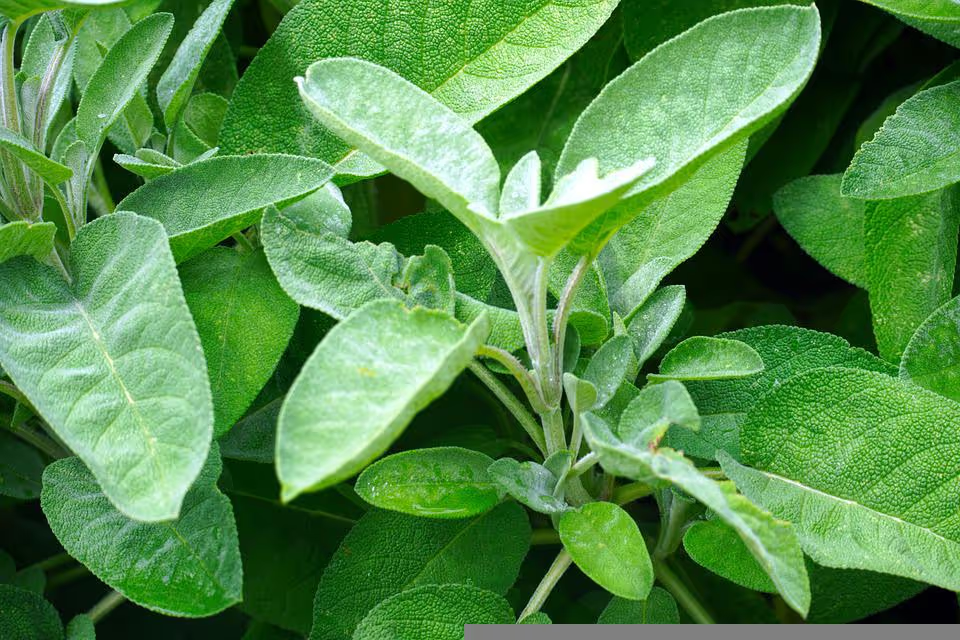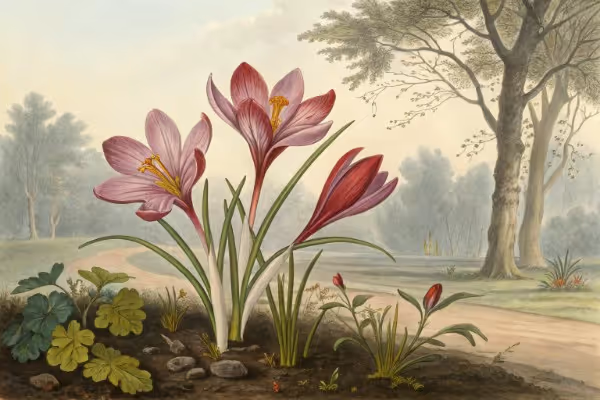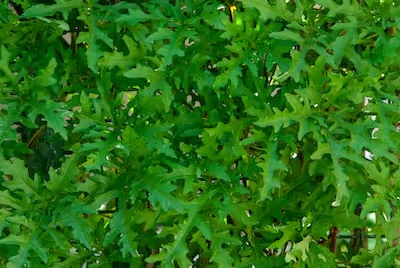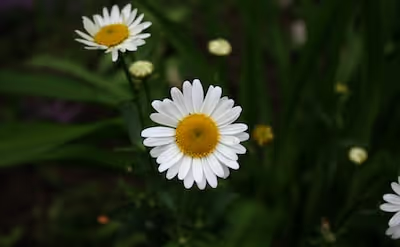Growing Sage: How to Plant, Care for, and Harvest at Home

Growing Sage
Growing sage doesn't demand fancy gear or expert skill—just sunshine, well-drained soil and room to breathe. Start by placing sage seeds or small plant starters 24 inches apart in fertile dirt, soaking up six to eight hours of full sun daily. Prune often, water sparingly, and you'll have fresh, aromatic sage ready to flavor your meals and cocktails year-round—read on to learn the rest.
Cheatsheet: Sage for Fresh Flavors & Self-Reliance
🌞 Choose Your Site
Sun: Minimum 6–8 hours. South-facing best.
Soil: Well-drained, sandy or loamy. pH 6.0–7.0.
80% less disease risk in raised beds or containers.
🌱 Planting Sage
- Seeds, cuttings, or transplants
- Sow: Indoors 6 weeks before last frost. Outdoors after last frost (55–70°F / 13–21°C).
- Depth: 1/8 in (3 mm). Spacing: 18–24 in (45–60 cm) apart.
- Transplant when seedlings have 2–4 leaves.
🛠️ Tools and Products You’ll Need
- Pruners
- Trowel
- Mulch (optional)
- Pot or bed with good drainage
💧 Care & Maintenance
- Water: Let soil dry between waterings. Do not overwater.
- Fertilizer: Avoid high nitrogen. Use compost once spring.
- Trim flowers to keep leaves tender.
- Mulch lightly in winter to protect roots below 15°F (−9°C).
✂️ Harvest & Storage
- Cut leaves as needed once plant is 6 in (15 cm) tall.
- Best flavor: Harvest before flowering.
- Air-dry stems or freeze fresh leaves.
- One plant yields up to 1/2 lb (225 g) dried sage/year.
🍃 Health & Self-Sufficiency Perks
Rich in: Vitamin K, antioxidants.
Use: Tea, seasonings, natural remedies. Antimicrobial benefits.
Self-sufficiency: Easy to propagate; regrows yearly for 3–5 years.
-
Growing Sage: How I Plant, Care for, and Harvest at Home
I grow sage like a Mediterranean shrub that wandered into my kitchen and never left. It likes sun on its back, sharp drainage under its feet, and a haircut at the right time.
In most gardens it behaves as a short-lived perennial, typically 3 to 5 years, hardy in USDA zones 4 to 9 with protection in wet winters. I replace plants before they sulk, which keeps flavor and vigor high.
Site and Soil That Make Sage Sing
Give sage 6 to 8 hours of direct sun and soil that sheds water fast. Heavy clay works only after I raise the bed and blend in mineral grit or coarse sand for drainage.
Target pH 6.0 to 7.5. I keep fertility lean to concentrate oils, using a light compost dressing in spring and nothing rich or nitrogen heavy after midsummer.
“Grow in full sun in well-drained soil.” Source: Royal Horticultural Society
Seed, Cuttings, or Transplants
Seeds germinate in 10 to 21 days at 65 to 70 F, 18 to 21 C, though flavor can vary plant to plant. I start indoors 6 to 8 weeks before last frost and pot up the stout seedlings only.
For clones, I take 3 to 4 inch softwood cuttings, 8 to 10 cm, in late spring. Strip the lower leaves, dip in rooting powder, and stick into a 50 percent perlite mix under bright shade.
Spacing and Planting
Set plants 18 to 24 inches apart, 45 to 60 cm, because airflow keeps mildew at bay. Plant crowns level with the soil and mulch with pea gravel, which warms the root zone and deters rot.
Containers need a 12 inch pot, 30 cm, with a gritty mix, I use 60 percent high quality potting mix, 30 percent perlite, 10 percent coarse sand.
Watering That Builds Flavor
I water deep, then let the top 1 to 2 inches, 2.5 to 5 cm, dry before watering again. Overwatering makes floppy growth and thin flavor.
Drip lines or a narrow spout can keeps foliage dry, which trims down powdery mildew risk. In heat waves, I water in the morning to let leaves dry fast.
Feeding, Pruning, and Training
Sage prefers a light touch. I feed once in spring with a gentle organic fertilizer around 4-3-3, then stop by midsummer to avoid lush, bland growth.
Prune in early spring, never into old brown wood. I remove winter kill, then take one third of the green growth and tip back after bloom for bushiness.
“Do not cut back into old wood, as it may not reshoot.” Source: RHS pruning guidance for woody herbs
Temperature, Frost, and Overwintering
Cold kills wet roots faster than ice kills leaves. In zones 4 and 5, I mound gravelly mulch around the crown after the ground cools, and I keep winter water off the plant.
In containers, I overwinter near a bright window at 50 to 60 F, 10 to 15 C, with a small fan for airflow. LED grow lights set at 12 to 14 hours hold leaf quality until spring.
Pests and Diseases I Actually See
- Powdery mildew: thin, dusty leaves in humid spells. Space plants, prune for airflow, and water at the base.
- Spittlebugs: foamy globs in spring. I hose them off and move on.
- Spider mites in hot, dry rooms. Rinse undersides and use horticultural soap as needed.
- Root rot in soggy beds. Fix the drainage or replant in a raised mound.
University extension pages echo the same theme, keep it sunny, airy, and dry at the roots. That single habit solves nine out of ten sage problems.
Harvest Timing and Technique
Leaf oils peak right before bloom. I cut in the morning once dew has dried, then take stems, leaving 4 to 6 inches, 10 to 15 cm, to regrow.
First year plants get a light haircut. Mature shrubs can give a generous cut twice a season without losing steam.
Drying, Storing, and Preserving
I bundle 6 to 8 stems and hang in a dark, airy room at about 70 F, 21 C. Or I use a dehydrator set to 95 to 105 F, 35 to 40 C, for quick, clean drying.
Store in airtight glass away from light, and aim to use within 6 to 12 months. Fresh leaves freeze well in olive oil cubes for weeknight pan sauces.
Flavor, Chemistry, and Stress
Sage tastes bolder under mild drought and full sun. Research summaries from The Herb Society of America note essential oil ranges often around 1 to 2.5 percent in Salvia officinalis, influenced by light, climate, and soil texture.
I keep plants a bit lean and bright for sharper pine, camphor, and citrus notes. It makes roast chicken taste like a countryside holiday.
Top Culinary Sage Varieties I Trust
- ‘Berggarten’: huge, crinkled leaves, dense habit, superb fresh flavor.
- ‘Dalmatian’: classic, vigorous, balanced oil profile.
- ‘Common’ Salvia officinalis: seed grown, variable but reliable.
- ‘Nazareth’: compact, silvery foliage for hot patios.
- ‘Extrakta’: selected for higher essential oil, strong and resinous.
Colored sages like ‘Purpurascens’ and ‘Tricolor’ earn space for beauty. I use them sparingly in the kitchen, as flavor often runs lighter than green forms.
Growing Sage Indoors
Give it a south window or quality LED 12 to 14 hours daily. Keep day temps near 65 to 72 F, 18 to 22 C, and night near 55 to 60 F, 13 to 15 C.
Use a terracotta pot for breathability and a very gritty mix. Water less than you think, then wait one more day.
Companions and Crop Rotation
I ring brassicas with sage to complicate cabbage moth scouting. The flowers pull beneficials all summer, which never hurts your odds.
Avoid wet corners near cucumbers and melons if airflow is tight. Sage wants sun and breeze, not vine shade.
White Sage vs Culinary Sage
Salvia apiana is white sage from the dry chaparral of the American Southwest. It has cultural significance and struggles in humid, cold climates.
Grow it only from nursery-propagated stock or seed, never wild harvested. For dinner, stick with Salvia officinalis.
Yield Reality Check
A mature plant in prime sun gives several generous harvests, enough for weekly cooking and drying jars. I plan one plant per heavy sage user, two if you host holidays.
Leaf size and oil content swing with weather and pruning. Keep notes and you will see patterns by year two.
Commercial Tips: What Actually Helps
- Pruners: A precise bypass pair keeps cuts clean, I favor a serviceable model with replaceable blades.
- Soil mix: Use a peat free base plus perlite and coarse sand for drainage in pots.
- Rooting hormone: A mild IBA powder improves strike rate on cuttings.
- LED grow light: Full spectrum with a dimmer, target 200 to 400 μmol m⁻² s⁻¹ for compact growth indoors.
- Dehydrator: Low temperature control keeps color and aroma intact.
Plant Problems, Fast Fixes
- Leggy plants: more sun, harder spring prune, pinch after bloom.
- Mildew: widen spacing to 24 inches, 60 cm, prune center, morning watering only.
- Winter losses: add grit, raise the bed, mulch with gravel, avoid rich compost late season.
- Bland flavor: scale back nitrogen, increase sun, harvest before flowering.
A Few Field Notes
I trial new sage every three years and compost the elders. The young plants outcook the old wood every time.
On hot afternoons I catch the resin off my fingertips and know supper will be easy. Anthony Bourdain would have approved of the shortcut.
Quick Reference: Growing Sage Specs
- Sun: 6 to 8 hours minimum
- Soil: well drained, sandy loam, pH 6.0 to 7.5
- Spacing: 18 to 24 inches, 45 to 60 cm
- Water: deep and infrequent, dry top 1 to 2 inches, 2.5 to 5 cm
- Fertilizer: light spring feed only
- Prune: early spring, avoid old wood
- Harvest: pre bloom mornings for peak oils
Trusted Sources I Lean On
Royal Horticultural Society, cultivation and pruning for woody herbs. University of Minnesota Extension and UC ANR, herb culture, drainage, and disease management.
The Herb Society of America, Salvia officinalis monograph, flavor chemistry and history. USDA Plant Hardiness Zone Map, local winter expectations.
FAQ
Is sage perennial? Yes, short lived perennial that benefits from renewal planting every few years.
Can I divide sage? I avoid division, it resents root disturbance, take cuttings instead in late spring.
Why did my sage die in winter? Wet soil plus freeze cycles rot crowns, improve drainage and use gravel mulch.
Can I eat ornamental sages? Some are edible but bland, stick to culinary types for consistent flavor.
How often should I replace plants? Every 3 to 5 years or when stems get woody and yields drop.
Frequently Asked Questions About Growing Sage
What is the ideal location for planting sage?
Sage thrives in full sunlight, enjoying at least six hours of direct sun daily. Choose a spot with good air circulation and well-draining soil to encourage healthy growth and prevent root rot.
How deep and far apart should sage plants be placed?
Plant seedlings at the same depth they were growing in their containers, spacing each plant around 18 to 24 inches (45 to 60 cm) apart. This spacing provides ample room for mature plants to spread comfortably and develop strong root systems.
Which soil type suits sage best?
Sage prefers neutral to slightly alkaline soil (pH 6.0–7.5) that drains freely. If you have heavy or clay-rich soil, mix in organic matter or sand to enhance drainage and ensure roots receive adequate oxygen.
How often should sage be watered?
Water sage plants sparingly once they become established. Allow soil to nearly dry out between watering sessions; typically, one deep watering per week suffices. Overwatering can lead to fungal diseases or root rot, especially in cooler climates.
Does sage need fertilizer?
Sage requires minimal extra nourishment. Apply a balanced, organic fertilizer or compost annually in early spring, just as new growth appears. Avoid excessive fertilization, as this can reduce the herb's aromatic intensity and flavor.
How hardy is sage to cold temperatures?
Mature sage plants tolerate cold temperatures down to approximately 15°F (–9°C). In regions experiencing colder winters, apply mulch around the base of the plants to protect roots and aid winter survival.
When and how should sage be harvested?
Harvest sage leaves regularly to encourage bushier growth. Snip sprigs in the morning after dew dries, ideally before flower buds open, to capture maximum flavor. To promote continued healthy growth, remove no more than one-third of the plant at a time.
Growing Sage at home rewards you with more than a fragrant herb—you're cultivating a resilient companion for your kitchen and garden. Well-drained soil, ample sunlight, and a light touch with water are all sage really asks for. Prune it back, and it’ll thank you with bushy, aromatic growth. Harvest those leaves often, but never strip the plant bare—leave some behind for tomorrow’s meals. With a little attention, sage delivers year after year, putting flavor and tradition right at your fingertips. If you’re eyeing other herbs like thyme for your garden, the same practical care applies. In the end, growing sage is about patience and respect for the process—give it the basics, and it’ll take care of the rest.
The Homesteader's Take: Sage for Self-Sufficiency
Natural Pest Control
- Plant sage near cabbage, carrots, and strawberries; its aroma deters carrot flies, cabbage moths, and slugs.
- Dried sage leaves burned outdoors repel mosquitoes and flies on warm evenings.
Medicinal Applications
- Sage tea relieves sore throats, coughs, and digestive discomfort due to anti-inflammatory and antimicrobial properties.
- A poultice of crushed fresh sage leaves cleans minor cuts and scrapes, helping wounds heal.
- Chewing fresh sage leaves can improve gum health and freshen breath.
Preservation Tips
- Dry harvested sage leaves by hanging bundles upside-down indoors, away from direct sunlight, preserving flavor and medicinal potency.
- Infuse sage in vinegar or oil to extend shelf-life, adding robust flavor to cooking year-round.
Sustainable Propagation and Seed Saving
- Collect seeds in late summer by shaking dried flowers into paper bags, storing in cool, dry places for next season's planting.
- Propagate sage through stem cuttings taken in spring; rooting them in moist soil yields identical plants without additional costs.
Beneficial Wildlife
- Sage flowers attract pollinators such as bees, butterflies, and hummingbirds, promoting garden biodiversity and increasing crop productivity.
- Planting sage helps sustain beneficial insects like ladybugs, which naturally manage aphid populations.
Find out which plants will thrive in your garden!
Answer a few fun questions and get custom plant recommendations perfect for your space. Let’s grow something amazing together!

start your season





